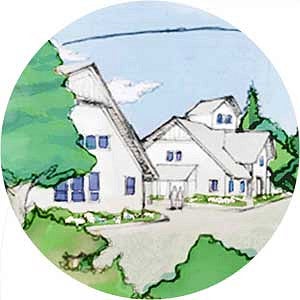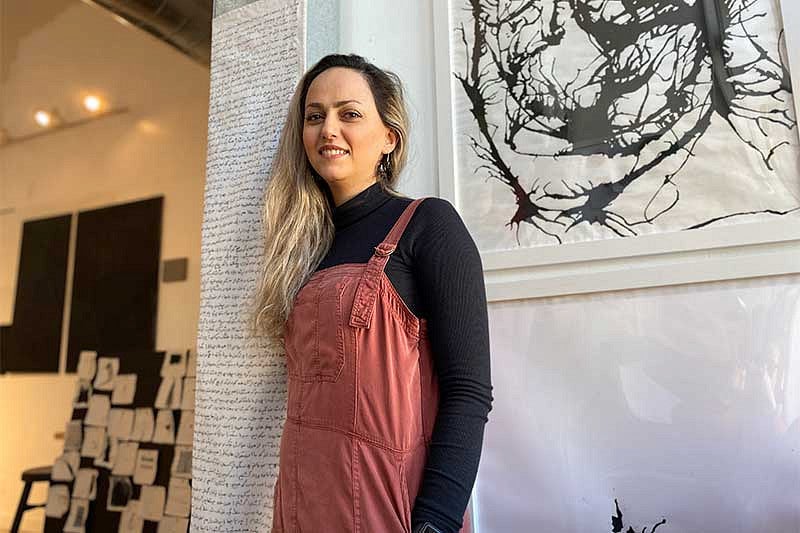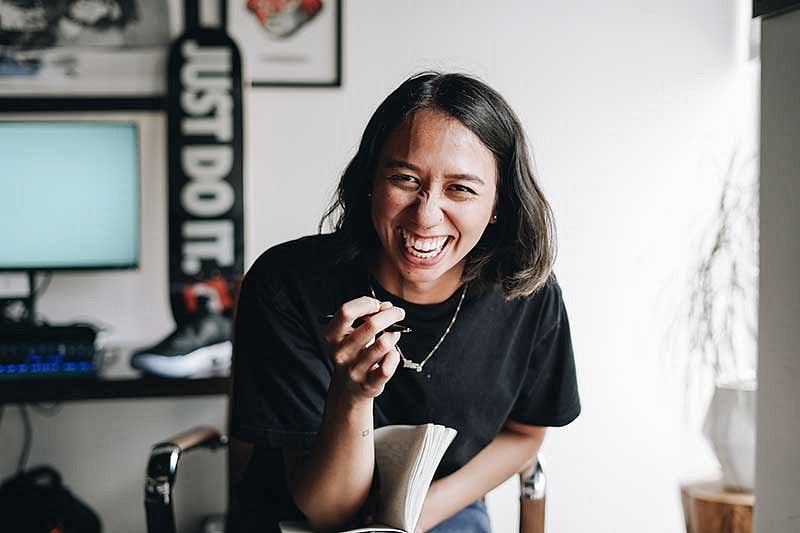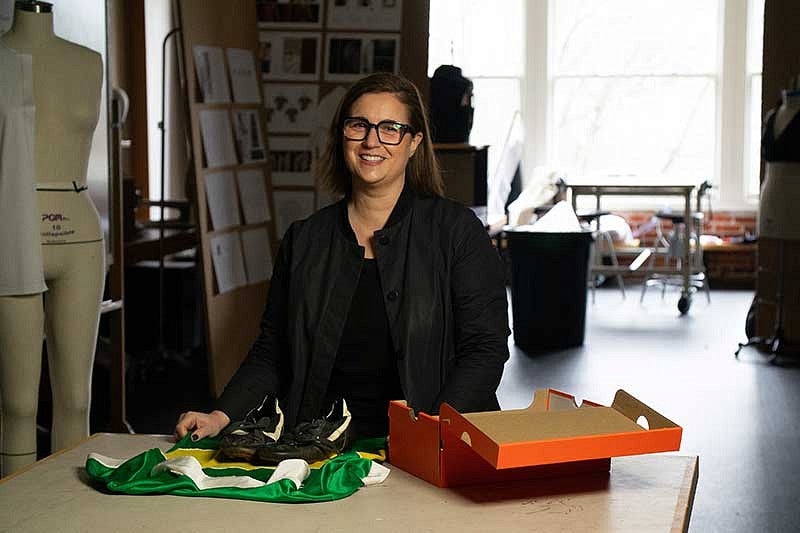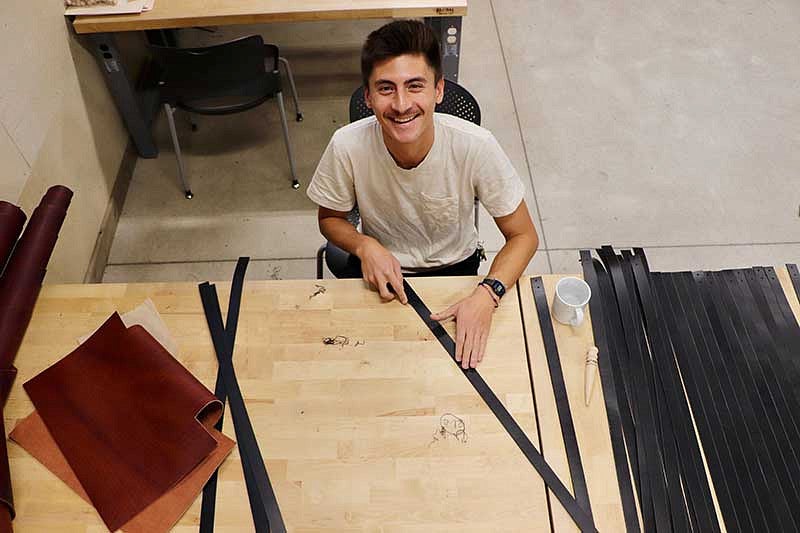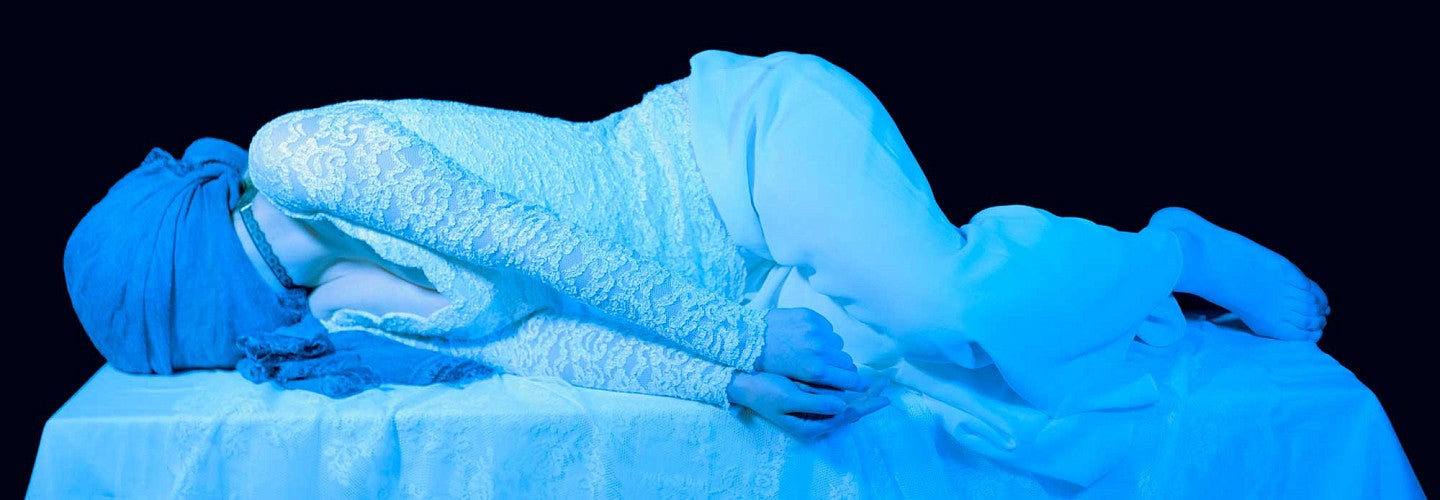
Dismantling Western Art, One Photo at a Time
To give you an idea of what kind of student Hyacinth Schukis is, consider this: They set out to learn Attic Greek to read the Archaic poet Sappho, which in turn inspired a series of self-portraits.
At the College of Design, Schukis is pursuing a BFA in art with a concentration in photography from the Department of Art in the School of Art + Design and a BA in art history, from the Department of the History of Art and Architecture (HAA), with a minor in Greek. In 2018, HAA awarded Schukis the Gloria Tovar Lee Scholarship for Promising Student in Art History.
Schukis is also student in the Robert D. Clark Honors College, where they have taught the introductory freshman course, “Know Thy Selfie,” juxtaposing critical theory with social media practices (e.g., Foucault’s “Panopticism” and Instagram’s user agreement).
Outside of their academic pursuits, Schukis works for Ditch Projects, a local contemporary artist-run studio and exhibition space.
Whether in their photography, research and writing, or teaching, Schukis seeks to intervene in history’s well-trodden narratives and to challenge their audience with a new perspective.
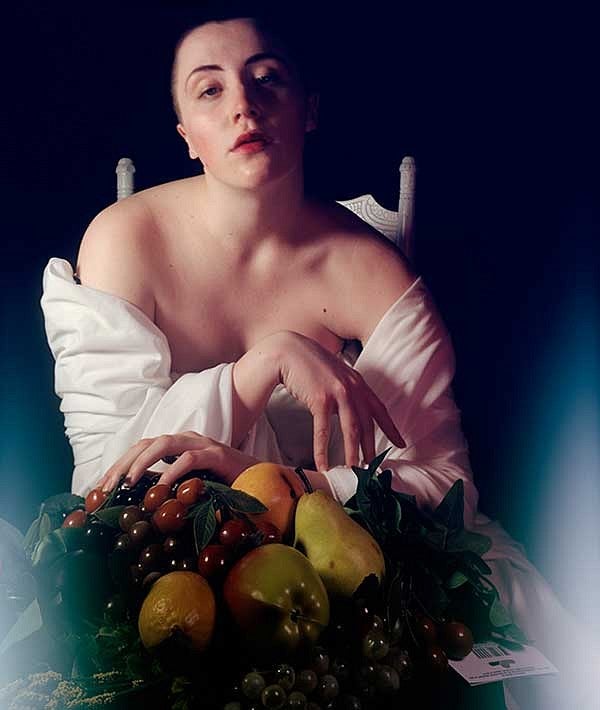
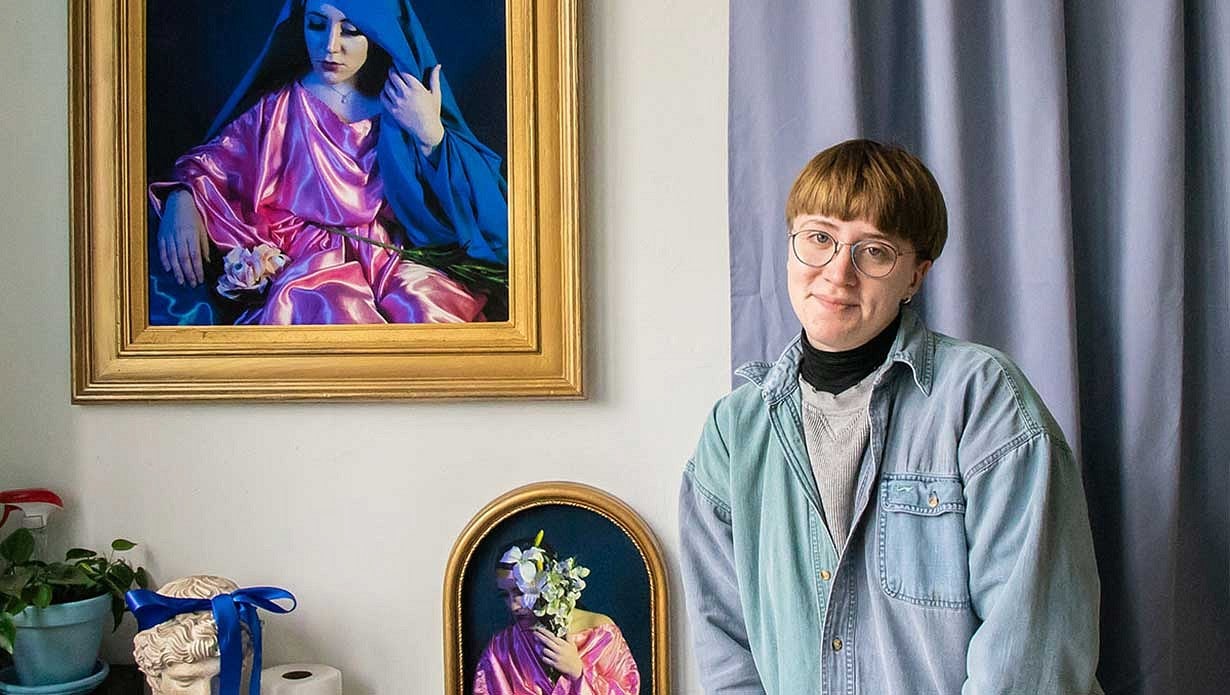
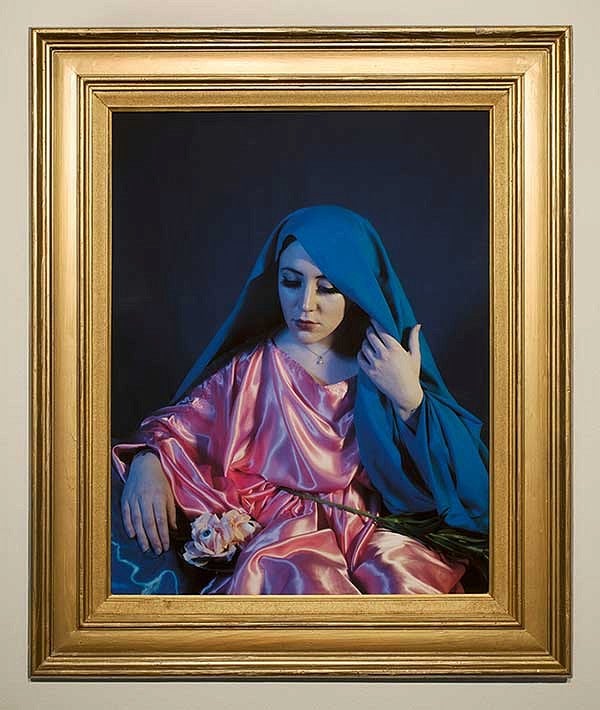
Why photography?
I was first handed a disposable camera around when I started walking, but when I turned 10 I took my first darkroom class. I fell in love with photography because it has a certain kind of magic. It has the power to give or take away the reality of something. Since I’m working with changing how we view imagery from Western art, reality is really something to consider, because it can give an image authority or power.
Your artist statement says that you explore “gendered (mis)representations sourced from art history and literature, found-objects and their classicisms, and assertations of authorship in the self-portrait?” Can you give an example in your work?
A piece I’ve been working on recently is based on paintings of Sappho, an ancient Greek poet whose claim to fame now—beyond the remaining fragments of her poetry—is that the word lesbianism is usually associated with her and where she comes from, the island of Lesvos.
The story of her death is unknown, but there is a myth first popularized by Ovid that, Sappho—one of the longest-revered women-loving-women of Western culture—flung herself from a cliff for a man. The most common modern painted representation of Sappho is of her at the edge of said cliff. These images are related to the Romantic sublime’s traditional representation of the human figure, staring down into the abyss of nature from a place of relative safety. Painting her in this position, where the place that we most often see her is probably not where or why she died, does something really awful and strange to the knowledge produced regarding her queer identity, immortalizing her as something she probably wasn’t.
I painted a backdrop taken from the background of one of these paintings—a picture of the cliff, the sea, and the moon—and photographed myself in front of it with my head in my hand, in an attempt to estrange the body from the image. I’m using visual tactics to pull Sappho out of that image. What I want to do is draw attention to the mythologization of her death.
What role does research play in your work?
A pretty big one. I often come across subject matter through my art historical study. If I’m really interested in a piece, usually I’ll find something I want to tweak, as a starting point. At this point, I’ll deeply research it. I’ll develop a visual method to intervene in the image’s history and then photograph it, bringing the original piece often all the way through.
The power structures of art history and the academy can’t be addressed with much nuance at least in my own art historical work. I often find these issues to be better addressed in my studio practice. In terms of research, often I feel that the job of my photographs is to distill some of the strangeness of the contradicting histories of an image.
How did your study abroad experiences in Greece and Rome influence your work?
My trip to Greece was incredibly important to me. I went to Greece for three weeks with [Senior Art Instructor] Colleen Choquette-Raphael and started making these self-portraits that were loosely inspired by Sappho’s poetry, which I had received a few months earlier in my first Honors College class.
The two museums that are the most near and dear to my art are the National Archaeology Museum and the Acropolis Museum in Athens, because they have huge amounts of ancient Greek art that I had studied in art history. Seeing those things in person changed me and I still haven’t figured it out. Part of it was the actual strangeness of those things in reality.
I spent eight weeks in Rome in the Architecture and Art History program. On the weekends I would take my camera out and travel to places by myself and sit in the basements of churches a lot and really soak in the Catholic imagery, and that has clearly taken a place in my artwork, too. I wasn’t raised Catholic, but the paintings and sculptures are so photographic because there is a long tradition in Catholicism of using light as metaphor, which is very compelling as a photographer.
What advice do you have for the next generation of students?
Don’t be afraid if something other than what you think you’re going to do becomes really interesting. I didn’t pick up art history right away when I got here, but I took a few classes and was absolutely floored by how much I loved it.
And take a minute to settle in. I was super uncomfortable when I started college. Moving away from home was really hard, and I didn’t feel situated leaving my art community. Create a space for yourself. I was encouraged to build a photo studio inside my dorm. I put up a black backdrop, set up some cheap lights, and started taking pictures there. That’s how all this studio portraiture started.


